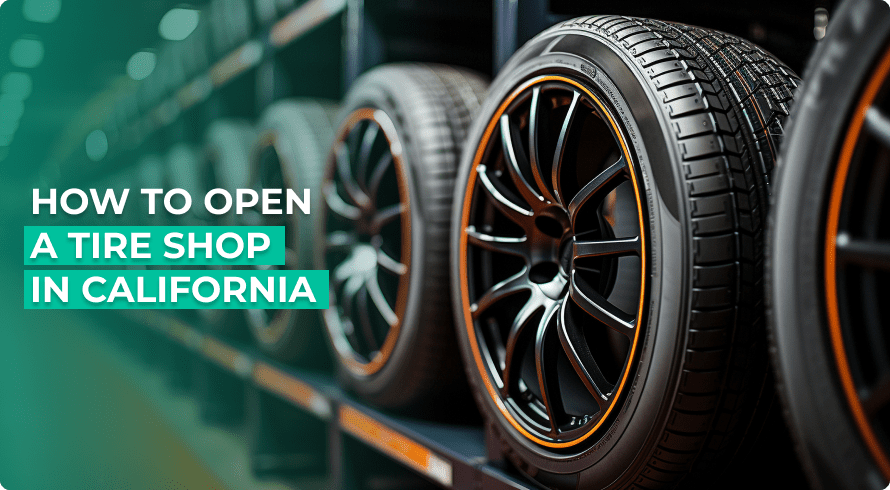This blog will cover the eight essential steps, from legal requirements to marketing strategies. So, let’s dive in.
Conduct Market Research
Before launching your tire shop, conduct thorough market research. This will help you understand the demand for tires in California. Analyze population demographics, vehicle ownership rates, and driving habits. Further, understand the preferences for different types of tires, such as all-season, performance, or off-road tires. Identify areas with high demand and assess potential competition. This will help you determine your shop’s unique positioning in the market.
For example, urban areas have a higher demand for commuter tires. Meanwhile, rural areas may prefer off-road or agricultural tires. Understanding these trends helps you tailor your inventory and services. On top of that, you will be able to meet your customer’s needs.
Create a Business Plan
Develop a comprehensive business plan that outlines your shop’s mission. Identify your target market. Figure out your pricing strategy, marketing plan, and financial projections. You will also have to define your competitive advantages. You can consider offering niche tire services like vintage tire restoration and custom installation. Even providing exceptional customer service can be a differentiator for your tire shop.
Include a detailed financial plan covering
- Startup costs: Lease or purchase of premises, equipment cost, and initial inventory.
- Operating expenses: Utilities, insurance, and marketing.
- Growth plan: Revenue forecasts based on sales projections
Your business plan serves as a roadmap for strategic decision-making. It will also help you secure funding if needed.
Legal Requirements and Permits
Ensure compliance with all legal requirements. Get the necessary permits and licenses to operate a tire shop in California. Check the specific permits and licenses required for the State of California. These could include:
Business License
Get a business license from the city or county where you are opening your shop.
Seller’s Permit
Apply for a seller’s permit from the California Department of Tax and Fee Administration (CDTFA) to collect sales tax on tire sales.
Environmental Permit
You may need environmental permits depending on your tire storage and disposal practices. These will be to comply with waste management regulations.
Zoning Permits
Check local zoning laws. This will help you choose a location in the correct retail or automotive business zone.
Sign Permits
Obtain sign permits if you plan to install outdoor signage for your shop. This will be as required by local ordinances.
OSHA Compliance
Adhere to Occupational Safety and Health Administration (OSHA) regulations. These outline workplace safety, including proper equipment maintenance and employee training.
Location Selection and Equipment Acquisition
Choose a strategic location for your tire shop. It needs to be easily accessible to customers. Additionally, it must have space for tire storage, service bays, and customer parking. When choosing the location, consider factors such as visibility and traffic flow. You should also identify the proximity to major roads, highways, and local demographics. All of this helps you make an informed decision for your tire shop’s location.
When it comes to the equipment, invest in quality equipment and tools. These will be for tire mounting, balancing, alignment, and repair services. Add tire changers, wheel balancers, and alignment machines. You should also consider adding air compressors, diagnostic tools, and safety equipment.
Make sure your equipment is up-to-date and well-maintained. It also needs to meet industry standards for safety and performance.
Inventory Management and Supplier Relationships
Establish relationships with reputable tire suppliers or distributors. With this, you get a diverse inventory of tires from various brands, sizes, and types. Stock a range of tires to meet customer needs. This includes:
- Passenger car tires
- Light truck tires
- SUV tires
- Performance tires
- Specialty tires
This helps you maintain adequate inventory levels. It will even minimize stockouts or overstocking. This will ensure timely replenishment and easy ordering of popular tire models.
Marketing and Promotion
Develop a marketing strategy to promote your tire shop and attract customers. Use both online and offline marketing channels to reach your target audience:
Online Marketing
- Create a professional website. Add information about your services, pricing, promotions, and contact details.
- Optimize your website for search engines (SEO). This will improve visibility and attract local customers searching for tire services online.
- Establish a presence on social media platforms (such as Facebook, Instagram, and Twitter). You can engage with customers, share updates, and run targeted ads.
Offline Marketing
Use traditional marketing tactics such as
- Local advertising, such as newspaper ads
- Direct mailers
- Flyers with discounts and offers
- Signage to reach potential customers in your area
Consider sponsoring local events. You can even partner with automotive clubs, dealerships, or auto repair shops. This will expand your reach and build brand awareness.
Offer promotions, discounts, or loyalty programs. This will incentivize customers to choose your shop for their tire needs.
Remember to use these channels to highlight your shop’s unique selling points (USPs). Whether you offer fast service, expert technicians, top-quality products, or competitive pricing, include it all in your marketing messages to differentiate yourself from competitors.
Customer Service Excellence
Focus on delivering exceptional customer service to build loyalty, trust, and repeat business. Train your staff to provide knowledgeable, friendly, and efficient service. This includes tire inspections, pressure checks, rotations, alignments, and puncture repairs.
Communicate transparently with customers. Tell them about pricing, service options, and recommended tire solutions. Give them information based on their vehicle and driving needs.
Provide a clean facility, comfortable waiting areas, and clear signage to create a welcoming and relaxed environment for customers. Encourage feedback from customers through surveys, reviews, or feedback forms. This will tell them you care about their opinion, help you continuously improve your service quality, and allow you to address any concerns or issues promptly.
Insurance Coverage and Risk Management
Get comprehensive insurance coverage for potential risks and liabilities. This will protect your tire shop, employees, and customers. Essential insurance policies for tire shops include:
General Liability Insurance
This covers third-party claims for bodily injury, property damage, or legal expenses if any of these are related to accidents on your premises.
Property Insurance
Property insurance protects your building, equipment, and inventory. It protects your assets from theft, fire, vandalism, or natural disasters.
Workers' Compensation Insurance
Provides coverage for employee injuries or illnesses. These could be related to work activities, including medical expenses and lost wages.
Business Interruption Insurance
This covers lost income and operating expenses. It will help if your shop is temporarily unable to operate due to covered perils (such as fire or storm damage).
Implement safety protocols, best practices, and regular inspections. This will help you maintain a safe working environment for your employees and prevent accidents or injuries. Train your staff on proper equipment use and hazard identification. They should also be aware of emergency procedures and comply with OSHA standards.
By following these steps and best practices, you can open and operate a tire shop in California. This will help you serve the needs of local drivers and build a solid reputation.










